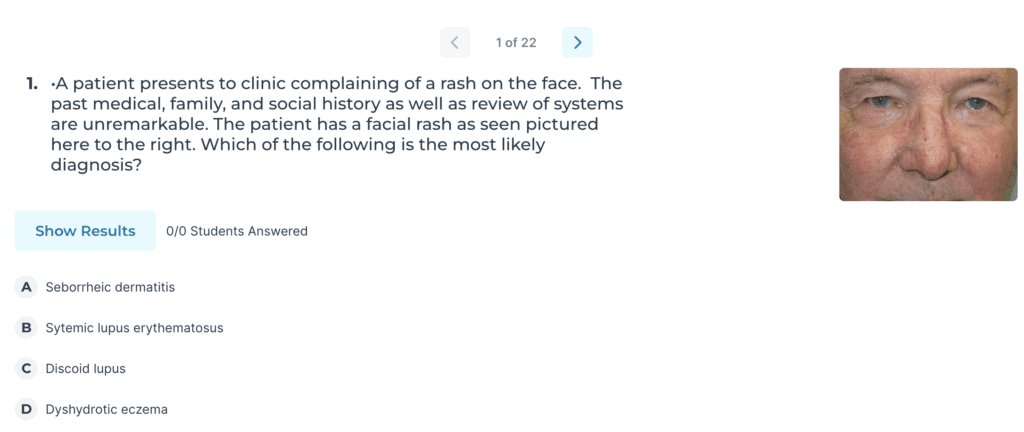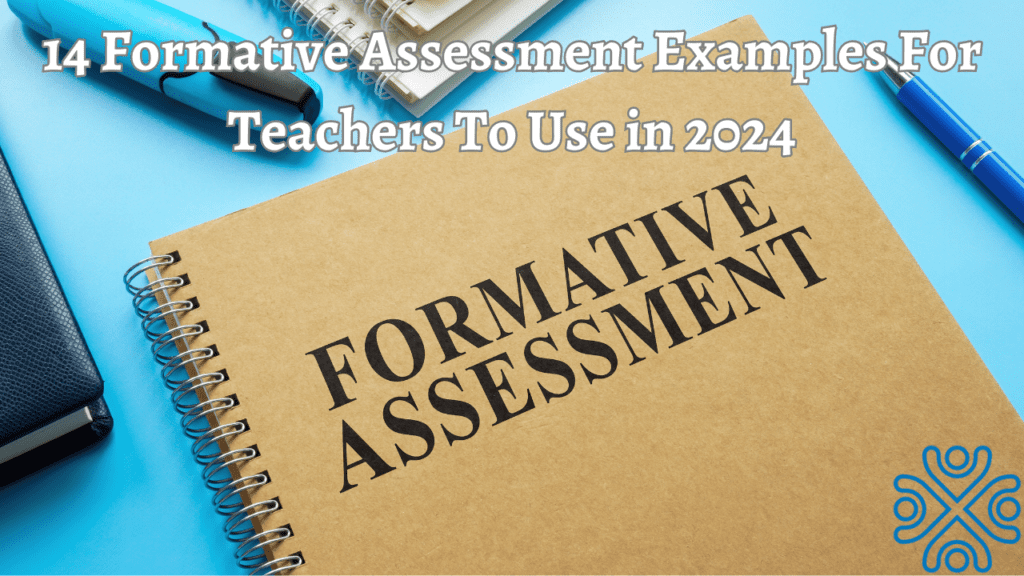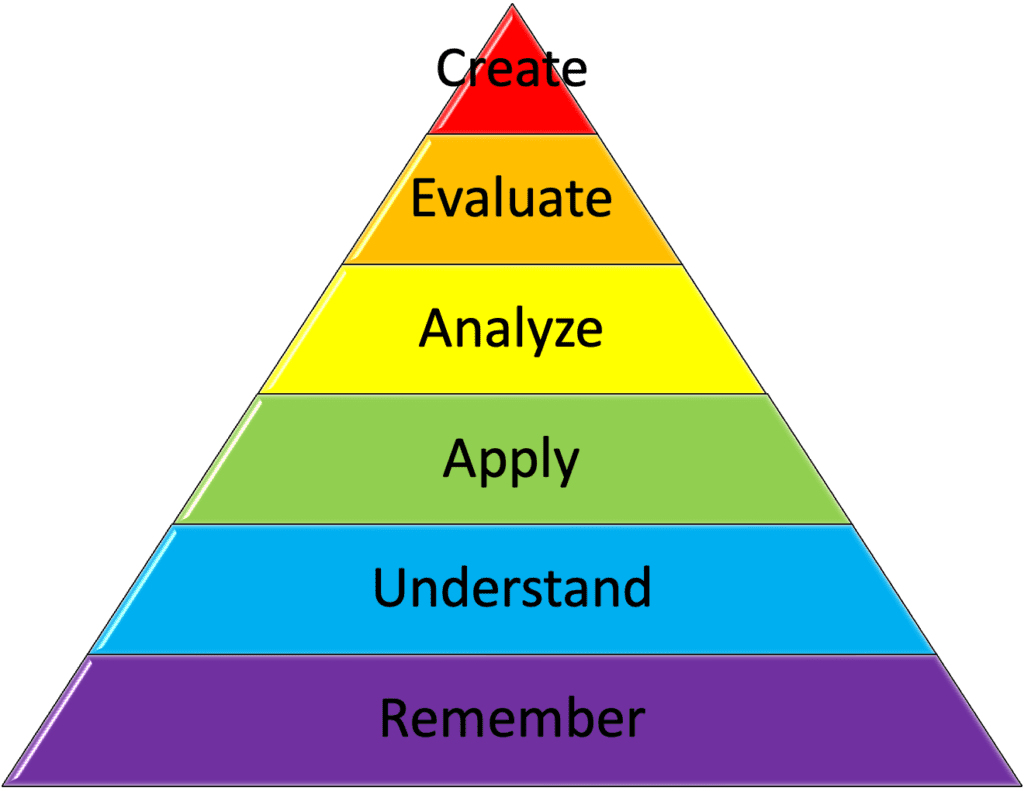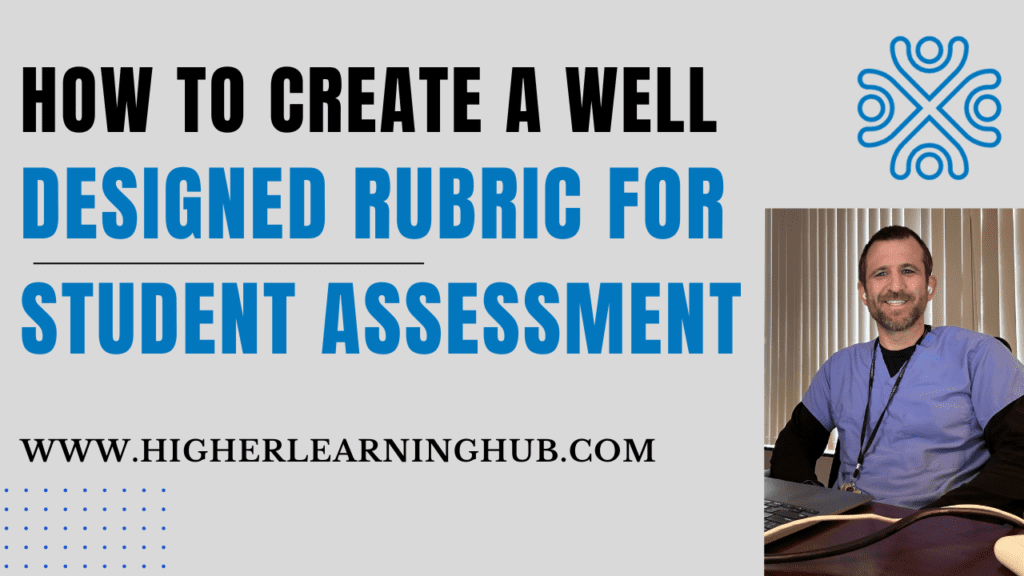Authored by Dr. Leland Jaffe; Associate Dean and Professor; Published on April 28th, 2024
Formative assessments stand as a cornerstone of effective teaching and learning. Unlike a traditional summative assessment, which evaluates students’ mastery of content at the end of a unit or course, formative assessment is an ongoing process that provides continuous feedback to both educators and learners throughout the learning process. By incorporating formative assessment techniques into the classroom, educators gain valuable insights into students’ understanding, allowing them to tailor instruction to address individual learning needs effectively.
Similarly, students benefit from timely feedback that informs their progress, identifies areas for improvement, and fosters a growth mindset. Beyond its evaluative function, formative assessment promotes active engagement, critical thinking, and metacognitive awareness, ultimately enhancing the overall learning experience for students and promoting academic success. In this blog post, we’ll explore 14 formative assessment examples for teachers to use in the classroom or clinical settings.
Formative Assessment Examples
1. The Muddiest Point
The “muddiest point” formative assessment technique is a simple yet great way for educators to gauge a student’s understanding and identify areas of confusion or difficulty. In this approach, instructors ask students to reflect on a lesson, lecture, or reading and identify the concept or topic that they found most challenging or unclear—the “muddiest point.” Students may jot down their thoughts on index cards, post-it notes, or electronic platforms, depending on the classroom setup. Once collected, the instructor reviews the responses to gain insight into common misconceptions or areas requiring further clarification. By pinpointing these “muddiest points,” educators can adjust their teaching strategies, provide targeted explanations or examples, and address student concerns promptly. This formative assessment technique encourages student reflection, promotes metacognitive awareness, and fosters a collaborative learning environment where students feel empowered to seek clarification and support.
2. Administer An Ungraded Pre-quiz Before Class


Ungraded pre-quizzes serve as invaluable formative assessment tools with several significant benefits for both educators and students. Firstly, they offer instructors insight into students’ prior knowledge and misconceptions before diving into a new topic, allowing for tailored instruction that meets learners at their current level of understanding. Additionally, pre-quizzes encourage active engagement and participation from students, priming their minds for learning and promoting a growth mindset by emphasizing the learning process over performance outcomes. Moreover, the ungraded nature of pre-quizzes reduces anxiety and pressure, creating a low-stakes environment where students feel comfortable taking risks, making mistakes, and seeking clarification—a crucial aspect of effective learning. From a student perspective, pre-quizzes provide an opportunity for self-assessment, helping learners identify gaps in their understanding and areas for improvement early on.
3. Classroom Polls
Classroom polls serve as dynamic formative assessment tools that promote active student engagement and provide real-time feedback to instructors. Students can indicate the degree of agreement or disagreement with a statement or a prompt from the instructor. By posing targeted questions related to the lesson content, educators can gauge students’ understanding, uncover misconceptions, and adapt their teaching approach accordingly. Through the use of polling platforms (e.g. Poll Everywhere) or simple hand-raising techniques, instructors can quickly assess the collective comprehension of the class and identify areas that may require further explanation or reinforcement.
Additionally, classroom polls encourage participation from all students, including those who may be hesitant to speak up in a traditional classroom setting, fostering a more inclusive and collaborative learning environment. Moreover, the immediacy of poll results allows educators to adjust their instruction on the spot, providing timely interventions and clarifications to ensure that all students grasp key concepts effectively.
4. Minute Paper – Commonly Used Formative Assessment Examples
The “Minute Paper” formative assessment technique is a brief and structured activity designed to gather student feedback at the end of a class session or lesson. In this approach, students are given a few minutes to respond to two key questions:
- “What was the most important thing you learned during this class session?”
- “What question(s) do you still have about the material covered?”
Students write down their responses on index cards, slips of paper, or digital platforms. The instructor collects and reviews the responses, gaining valuable insight into students’ comprehension, engagement, and areas of confusion. One-minute papers allow educators to assess student learning informally, identify misconceptions or gaps in understanding, and tailor future instruction to address students’ needs effectively. Additionally, it encourages reflective thinking and metacognitive awareness among students, fostering a deeper understanding of the material and promoting active engagement in the learning process.
5. Interactive (ungraded) Classroom Quizzes – My Most Utilized of the Formative Assessment Examples
In-class ungraded quizzes serve as effective formative assessment tools with several significant benefits for both educators and students – my favorite platform is Socrative.com. Firstly, these quizzes provide instructors with real-time feedback on students’ understanding of key concepts, allowing for immediate adjustments to teaching strategies or content delivery as needed. You can present either multiple-choice questions or open-ended questions. By gauging students’ comprehension during class time, educators can identify areas of confusion or misconceptions early on and address them promptly, thereby enhancing the overall learning experience. I take time to not only review the correct answers but explain why the wrong answers are incorrect.
Additionally, ungraded quizzes promote active engagement and participation from students, encouraging them to process and apply course material in a low-stakes environment actively. These quizzes offer students an opportunity to assess their understanding and receive immediate feedback on their progress, fostering a sense of ownership over their learning journey. Overall, in-class ungraded quizzes facilitate formative assessment practices that promote student engagement, support metacognitive development, and are an easy way to inform instructional decisions in real time. These quizzes can also be administered at the end of class to determine students’ progress on a particular topic.
6. Pro and Con Grid
A pros/cons grid is a formative assessment tool used to evaluate the advantages and disadvantages of a particular concept, strategy, or decision. In this grid, educators prompt students to list the pros and cons of a given topic in separate columns. Students then populate the grid with relevant points, providing reasoning or evidence to support their perspectives. This activity encourages critical thinking, as students must consider multiple aspects of the topic and weigh their relative merits.
Additionally, it fosters reflection and metacognition, as students articulate their thoughts and engage in self-assessment. However, a potential drawback of the pros/cons grid is that it may oversimplify complex issues or overlook nuances in favor of binary categorization. Educators must therefore ensure that students understand the limitations of this tool and encourage them to think critically about the subtleties of the topic at hand. Overall, the pros/cons grid can be a valuable formative assessment strategy for promoting critical thinking and facilitating discussions on various subjects.
7. Open-Ended Questions
Open-ended questions are a formative assessment method that prompts students to provide extended responses, typically in their own words, rather than selecting from predefined options. These questions encourage critical thinking, creativity, and deeper understanding as students must formulate thoughtful responses and articulate their ideas effectively – they also foster excellent classroom discussions. Unlike closed-ended questions, which often have one correct answer, open-ended questions allow for a range of responses, providing valuable insight into students’ understanding, reasoning, and thought processes.
Educators can use open-ended questions to assess higher-order thinking skills, such as analysis, synthesis, and evaluation, and to prompt reflection on course material. Additionally, these questions promote active engagement and encourage students to take ownership of their learning by exploring concepts in greater depth. While grading open-ended responses may require more time and subjective judgment than other assessment methods, the rich insights gained from students’ responses make them a valuable tool for informing instruction and supporting student learning.
8. Exit slips
The exit slip method of formative assessment is a brief and focused activity conducted at the end of a lesson or class session to gather feedback from students. In this approach, students are given a small slip of paper or digital platform and asked to respond to a prompt or question related to the day’s lesson. The prompt may vary depending on the learning objectives and instructional goals but often focuses on assessing student understanding, reflecting on the lesson content, or identifying areas of confusion or interest.
Examples of exit slip prompts include: “What was the most important thing you learned today?”, “What questions do you still have about the material?”, or “How confident do you feel about applying this concept?” Once students have completed their responses, they submit their exit slips to the instructor, who reviews them to gain insights into student comprehension, engagement, and areas for further instruction or reinforcement. The exit slips method provides educators with valuable formative feedback that can inform future lesson planning, instructional adjustments, and student support strategies.
9. Student-Generated Test Questions
Student-generated test questions are a formative assessment tool that empowers students to take an active role in their learning by creating their own questions based on course material. In this approach, educators prompt students to develop test questions that align with the learning objectives, content, and skills covered in the course. Students can create various types of questions, including multiple-choice, short-answer, essay, or problem-solving questions, depending on the nature of the material and the desired learning outcomes. By generating test questions, students engage in higher-order thinking processes, such as analysis, synthesis, and evaluation, as they must comprehend and organize the material to formulate meaningful questions.
This activity promotes metacognition, as students reflect on their understanding of the material and identify areas where they may need further review or clarification. Once students have created their questions, educators can use them to assess student comprehension, reinforce key concepts, and stimulate discussion in the classroom. Moreover, involving students in the question-generation process fosters a sense of ownership over their learning and encourages active participation in the learning process. Overall, student-generated test questions serve as a powerful formative assessment tool that promotes deep learning, critical thinking, and student engagement.
10. Utilizing A Venn Diagram


A Venn diagram is a formative assessment tool that helps students visually compare and contrast two or more concepts, topics, or sets of information. In this approach, educators provide students with a blank Venn diagram or guide them in creating one, with overlapping circles representing the commonalities and differences between the items being compared. Students then populate the diagram with relevant information, identifying shared characteristics in the overlapping area and unique characteristics in the non-overlapping areas.
Using Venn diagrams as a formative assessment tool offers several benefits. Firstly, it promotes active engagement and critical thinking as students analyze and categorize information to determine similarities and differences. Additionally, Venn diagrams provide a clear visual representation that enhances comprehension and aids in organizing complex ideas. This visual approach also accommodates different learning styles and supports students in making connections between concepts.
Furthermore, educators can use students’ completed Venn diagrams to assess their understanding, identify areas of confusion, and tailor instruction to address specific needs. By incorporating Venn diagrams into formative assessment activities, educators can foster deeper understanding, promote critical thinking skills, and facilitate meaningful learning experiences for students.
11. Exit Tickets
Exit tickets are a formative assessment method used to gather feedback from students after a lesson or class session. These are brief prompts or questions that students respond to before leaving the classroom. Exit tickets typically focus on key concepts, skills, or learning objectives covered during the lesson and may vary in format, such as short answer responses, multiple-choice questions, or reflections.
The purpose of exit tickets is to gauge student understanding, assess comprehension, and identify areas of confusion or need for further clarification. By collecting exit tickets, educators gain valuable insights into student learning and can adjust future instruction accordingly. Additionally, exit tickets provide students with an opportunity for self-reflection, allowing them to assess their own understanding and identify areas for improvement.
Exit tickets serve as a quick and effective formative assessment tool that promotes active student engagement, encourages reflection, and informs instructional decisions. They are versatile and adaptable to various subjects and grade levels, making them a valuable addition to any educator’s toolbox.
12. Peer Assessment
Peer assessment is a formative assessment method that involves students evaluating the work of their peers based on established criteria or learning objectives. In this approach, students provide feedback, critique, or scores to their classmates’ assignments, projects, presentations, or performances. Peer assessment promotes active learning, critical thinking, and self-regulation skills among students as they engage in evaluating and providing constructive feedback to their peers.
There are several benefits to using peer assessment as a formative assessment tool. Firstly, it encourages students to take ownership of their learning by actively participating in the assessment process. By evaluating their peers’ work, students gain a deeper understanding of the subject matter and develop their analytical and evaluative skills. Additionally, peer assessment promotes a collaborative learning environment where students learn from each other and support one another’s academic growth.
Moreover, peer assessment provides educators with insights into students’ understanding, misconceptions, and areas for improvement. It can complement traditional teacher-led assessments by providing a broader perspective on student performance and fostering a sense of responsibility for one’s own learning. Overall, peer assessment is a valuable formative assessment method that promotes student engagement, critical thinking, and collaborative learning in the classroom.
13. Discussion Forums
The discussion forum method of formative assessment is a dynamic approach that fosters student engagement, collaboration, and critical thinking skills. In this method, educators create opportunities for students to participate in online or in-person discussions where they can share ideas, ask questions, and explore course concepts in-depth. By posing thought-provoking questions or prompts related to the curriculum, educators encourage students to actively contribute their perspectives and engage in dialogue with their peers.
Through these discussions, students not only demonstrate their understanding of the material but also refine their communication skills, deepen their comprehension, and gain exposure to diverse viewpoints. Discussion forums provide educators with valuable insights into student learning and progress, allowing them to tailor instruction to address individual needs and promote student success. Additionally, by fostering a collaborative learning environment, discussion forums promote a sense of community among students, enhancing their overall learning experience.
14. Concept Map
A concept map is an effective way to visually represent the connections and relationships between key concepts or ideas within a specific topic or subject area. Students construct graphical representations that illustrate the hierarchical structure and interrelatedness of information, demonstrating their understanding of the material and how different concepts are linked together. Beginning with a central concept or topic, students branch out to connect related ideas, organizing concepts hierarchically and indicating the relationships between them using lines or arrows.
Concept maps engage students in higher-order thinking processes such as categorization, analysis, synthesis, and evaluation. Educators utilize concept maps to gain insights into students’ understanding of complex topics, identify misconceptions, and determine areas for additional instruction. Additionally, concept maps promote metacognitive reflection as students make connections between concepts and reflect on their learning process. Overall, concept maps foster active learning, critical thinking, and deeper comprehension of course material, making them a valuable tool in the formative assessment process.
Formative Assessment Examples For Educators – Conclusion
In conclusion, formative assessment is a powerful tool for enhancing student learning and promoting academic growth. There are many creative ways to integrate formative assessment into your classroom. Through the 14 examples of formative assessment discussed in this blog post, you’ll have a variety of strategies to choose from, each tailored to meet the diverse needs of students and learning environments. From exit tickets and peer assessments to interactive quizzes and classroom polls, these formative assessment methods foster active engagement, critical thinking, and self-reflection among students. By integrating formative assessment into their teaching practices, educators can effectively monitor student progress, identify areas for improvement, and provide timely feedback to support ongoing learning. Ultimately, the goal of formative assessment is to empower students to take ownership of their learning journey and achieve success both inside and outside the classroom.
What types of formative assessment examples do you use in your classroom? Comment below!







